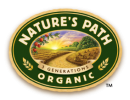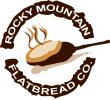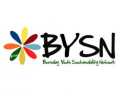Blog Post: Sustainable Agriculture Solutions
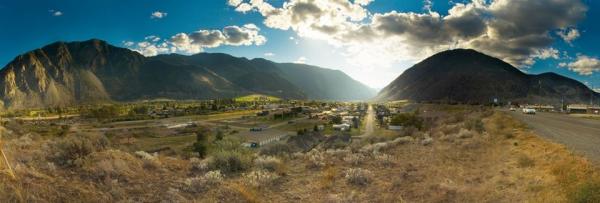
British Columbia - Leading the World in Sustainable Agriculture Solutions
Sustainability more than any other discipline is governed by interdisciplinary thinking; sustainability touches everything, and can be applied to almost any problem solving scenario using a broad triple, quadruple or quintuple bottom line lens.
Food Waste, Food Security, Public Health, removing Toxic Chemicals from our environment, the Food Production Productivity Quotient, and the legislated expansion of agricultural and bio-conservation zones, are some of the solutions that are currently being perfected in British Columbia to help meet the agenda for a sustainable life on planet Earth. The wide variation of bio-climatic zones, types of soils, agricultural land protection covenants, and world class universities have given BC just the right mix; allowing it to develop some of the best minds and pest management methodologies anywhere in the world. A number of institutions and programs export intellectual property, products, and services that are solving many of the challenges facing global food systems.
British Columbia
British Columbia (“BC”) agricultural products are well known to many around the world due in part to the amazing successes of the BC wine industry, the timber industry, abundant seafood (including Salmon), and many types of berries including cranberries, blueberries, and fruits. Despite having only 5% arable land, the mostly mountainous province is characterized by 8 different climatic zones, fertile valleys and river deltas enabling the growth of everything from peaches, apples, cherries, and wine grapes in the drier regions, wheat and other grains on the plateau regions, and various types of timber in the wetter coastal and river delta regions.
Okanagan-Kootenay Sterile Insect Release Program

Much of the success of the BC fruit industry can be attributed to the Okanagan-Kootenay Sterile Insect Release Program (“OKSIR” or “SIR”). Without this program, it is unlikely that much of the fruit grown in BC would ever make it to market. The program was developed to combat invasive species like the European Codling moth that had been wreaking havoc on apple, pear and other fruit trees found in BC’s Okanagan, Similkameen, and Shuswap valleys since its accidental introduction to BC from Europe in the early 1900’s.
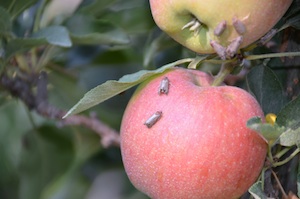
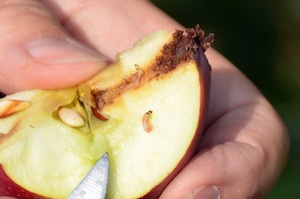
images courtesy of OKSIR program
First developed in the 1930’s, the program began iterative release trials in the early 1950’s, with the SIR program commencing in 1992, and the first release of sterile codling moths in 1994. The program used a progressive zone system which culminated with sterile moths finally being released in all zones in 2003. The goal of the plan was to achieve: < 0.5% damage on at least 95% of all acreage for the service area as whole.
Melissa Tesche, Acting General Manager for OKSIR said the program took may years to develop. The reason; "a combination of completing the science of sterile insect release for codling moth (how do you mass rear the moths? Sterilize them? Trap them? How many do you release?) There are many questions when you are embarking on such an ambitious program, and a combination of gathering the political will required to fund and implement an area-wide program."
The program used a three stage strategy:
1 - Reduce wild moth populations so that when sterile males were released they outnumber wild moths by a ratio of 40:1
2 - Summer growing season release of anywhere from 10 - 14 Million sterile codling moths.
3 - Ongoing monitoring pf SIR staff and the broader community.
According to Tesche, as a result of the OKSIR program, there has been a 96% reduction in wild codling moth population in the OKSIR program area. Today, 98% of orchards receiving sterile moths over the past 20 years have ≤ 0.2% fruit damage due to the this pest. The number of urban sites with C. pomonella in orchard buffer zones (potential population sources) dropped by 40% from 2001-2014. The removal of thousands of unmanaged/abandoned host trees reduces the risk of undetected establishment of alien pests. The program has led to a 96% reduction in pesticide use for codling moth control. Many growers have not had to spray pesticide for more than 10 years.
Annual total program costs remain around $3M per year, with the project almost entirely self-funding through direct per-acre parcel taxation of the farmland in production.
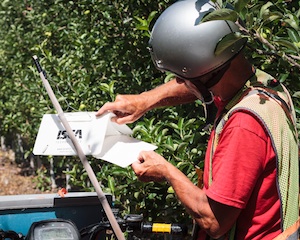
A recent cost-benefit analysis conducted on the OKSIR Program has revealed that on both commercial and non-commercial properties, for every 1 dollar of cost for control of codling moth there was 2.5 dollars in benefit. Using SIT, the benefits are greater than the costs to both the producer and to society as a whole. The benefit to the producer is 25% greater than the cost of the entire program, and under the OKSIR funding structure, the producer pays 65% less than what they would pay for the same services if the area wide program was not in place.
The SIR reports that the socio, ecological and economic benefits of the program include:
- Reduced urban/agriculture conflicts by reducing amount of spray being applied
- Reduced risks of pesticide use (for example provincial pesticide sales figures show that 2008 sales of organophosphate pesticides were 93% lower than in 1991.)
- Reduced pesticide use helps protect other biodiversity in the region
- Reduced pesticide use makes the products more desirable meeting many foreign importation requirements.
- Providing stability to an industry that as whole provides close to $1B in regional economic activity
- Assisting in the development of Organic fruit and vegetable farming in the region.
- Minimization of costs associated with damaged crops.
- Increased viability of economics of farming as a livelihood and the diversification it provides in the way of increased tourism, real estate values based on the continued natural beauty of the region.
- Economic and scientific benefits as a world renowned centre for science on sterile insect release.
BC isn't the only jurisdiction to develop this type of solution to pests, but OKSIR has become a centre of excellence with regard to SIR pest management. Examples of other applications include;
Australia uses SIR for tackling the Queensland fruit fly:
http://preventfruitfly.com.au/mass-producing-sterile-queensland-fruit-fl...
South Africa uses SIR for False Codling Moth: http://www.xsit.co.za/about.html
USA uses SIR for pests such as the Pink Bollworm and the Screwworm.
Tesche says the The BC Fruit Growers Association and other industry groups have been asking OKSIR to consider adding other pests and/or crops to their mandate. The BCFGA and OKSIR are currently polling growers to get their direct input on how they would like to see the program evolve. SIR program model could potentially be used in many other countries, especially in the fight against mosquitos now that vector diseases (can release only non-biting males).
A solution for ZIKA Perhaps?
For more information on the SIR program see:
http://www.oksir.org/default.asp
KPU - Institute for Sustainable Horticulture
Kwantlen Polytechnic University (“KPU”) is leading advanced research and commercialization of fruit, vegetable and ornamental agriculture in its Institute for Sustainable Horticulture (“ISH”). Deborah Henderson, director of the ISH sees numerous benefits to the work she does; from reducing pesticide use, to helping to get high quality products to market, and even reducing food waste. Driven by an innovative, entrepreneurial, can-do spirit Dr. Henderson says regarding microbial pesticides; “nobody was doing it, someone has to do it - not only is the socio-eco-financial opportunity too great, so is the potential downside of not doing this work” Deborah goes on to explain the Latin the term “cides” means “to kill”, “and that’s exactly what they [Pesticides] do” she says. As believer in Organics from an early age I ask, Deborah “what if people were presented with another option?” Deborah emphatically smiles and says “well, luckily there is another option! - if we can use what’s out there naturally, then we don’t even need pesticides.”
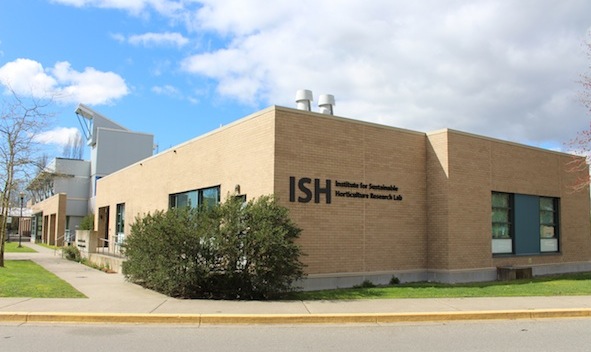
Deborah and her team have been working since the opening of the Institute in 2011 on using naturally occurring microbes to reduce insect plant pests, and to reduce various types of plant disease. Deborah says; “the ISH program has been developed in response to industry demand.”
She explains that; “a lot of the products we create here are either not in existence, or commercially available.” The geography of Canada and British Columbia certainly makes the marketplace difficult to service, but so too does the the high cost of commercialization, the perceived small market size that leads many large companies to believe that the product is not a good candidate for development in lucrative marketplaces like the United States.
Deborah says; “few companies in BC have undertaken the challenge to commercialize microbial pesticides.” However, for an area like British Columbia local tailor made production of biological pest controls can be very helpful for local producers. Deborah says; “my mantra is: more biocontrol products in the hands of the producers”. “We work with many companies here at our facility to create “made to order” designer products for their specific use.”
I asked Deborah for some examples of BC products that might benefit from the use of a microbial agent to control pests instead of chemical alternatives. Deborah said; “sure, how about raspberries - I bet you didn’t know that 95% of the raspberries in Canada are produced right here in BC? Cranberries are another crop that BC is a very large producer of, in fact the BC Cranberry Growers Association (“BCCGA”) estimates that BC grown cranberries account for approximately 12% of all cranberries grown in North America, and other studies estimate BC accounts for approximately 80% of Canadian cranberry production.”
Deborah invites me on a tour of the facility, and as I follow her into the research lab she tells me that masters students are currently conducting “murder trials” - “Murder trials” I ask. Deborah laughs, and goes on to say; “not all bacteria or fungi are ‘bad” - we use beneficial fungi that are not harmful to plants or humans, but can be very effective at killing insects.” The “murder trials” are our way of testing a microbial agents effectiveness in killing the insect pest.” The process involves a number of processes including; isolating the objectives of the study, selection of materials and methods, identification of suitable ‘insect bait’, identification of an effective Entomopathogens (bacteria, fungi, nematodes, and viruses that are harmful or deadly to insects), and then the application of the test itself, and interpretation of the results. Deborah says; “the petri dish is the first step,” then the team has to figure out in “field trials” if it will work in the field, how will the microbe be delivered to the pest, and can the microbe survive and multiply sufficiently to overcome the insect?
The 600 metre square research facility is LEED Gold certified, and is accompanied by an equally sized geothermal powered greenhouse. The research team uses 4 climate controlled, separately disinfected and filtered air rooms to inoculate, produce, and harvest beneficial fungi, bacteria, or viruses. The facility also has 4 insect rearing rooms, and ultra low temperature freezer, walk-in cooler, with 6 different air pressure zones to mitigate the possibility of cross-contamination.
Examples of some of the products created include:
- specific insect specific control treatments
- green disinfectants
- and biofertilzers made from; plant extracts, beneficial microbes, and stabilized compost tea.
Benefits of corporate/ ISH collaborative microbial pest control development include;
- Substantial cost savings instead of using commercially produced products
- Access to highly skilled post doc’s, researchers, and student interns.
- Sustainable production (reduced GHG emissions, renewable materials, low cost of feed stock)
- Process onsite (often just in time, rather than just in case)
- Develop a new product and or Intellectual Property that can be sold for substantial income
- Highly desirable product free of hazardous chemical residues.
For more info or to engage KPU-ISH to develop at natural solution for your company visit:
ECOATION™

Ecoation Innovative Solutions Inc., is another British Columbia based company developing advanced Agriculture solutions and Crop Information Systems. The Ecoation system helps growers to rapidly detect crop stress due to pests, diseases, deficiencies and environmental factors. Led by Mrs. Maryam Antikchi, BSc in Engineering Physics from UBC, and Saber Miresmailli, PhD. researcher from UBC, the team is confident that they have world class technologies that will greatly advance plant health. Dr. Miresmailli says; “As a member of Vancouver Food Policy Council and a member of the Ministry of Agri-Food Advisory Council, I am closely involved with both food consumers and producers in British Columbia. At Ecoation we are trying to help British Columbians to buy local, and grow local food while preparing themselves for the consequences of global climate change and its impact on our cropping systems.
 Dr. Miresmailli believes that having accurate information from each individual plant greatly enhances growers’ decision making. He says; “At Ecoation, we believe that farmers know best when it comes to their crops. Expert growers have this amazing intuition and insight that allows them to figure out what’s wrong with a plant with a single glance. The problem is, one can not learn the art of growing over-night, and expert growers can not be in all places at once. The Ecoation system digitizes growers expert knowledge and allows them to expand their presence. Our technology is not a replacement for farmers; it is an expansion.
Dr. Miresmailli believes that having accurate information from each individual plant greatly enhances growers’ decision making. He says; “At Ecoation, we believe that farmers know best when it comes to their crops. Expert growers have this amazing intuition and insight that allows them to figure out what’s wrong with a plant with a single glance. The problem is, one can not learn the art of growing over-night, and expert growers can not be in all places at once. The Ecoation system digitizes growers expert knowledge and allows them to expand their presence. Our technology is not a replacement for farmers; it is an expansion.
The innovative approach is helping to change the way we produce and protect our food. Dr. Miresmailli says Ecoation technology enables growers to reduce their crop loss by as much as 90% and their crop management related operation costs by up to 75%. As described by Dr. Miresmailli;

According to Dr. Miresmailli; The Pain: Increasing food production is a global challenge. Farmers must continuously monitor their crops for issues. If left unchecked, certain problems can cause significant damage in just a few weeks if not days. The current monitoring system provides too little information too late. Some issues can potentially wipe out the entire crop if not detected at early stages. Xylella fastidosa for example is currently threatening the entire olive industry in Italy. The climate change and water shortage impose new challenges on farmers who used to rely on historical trends and their intuition for decision making. Prophylactic solutions and practices only work for known issues and are capital and labour intensive.
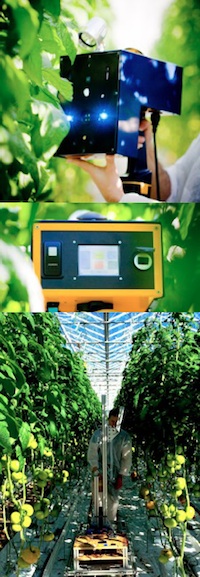 The Ecoation Solution: Ecoation technology shifts the paradigm; instead of looking for small bugs or late stage diseases, we turn to plants as the most reliable source of information. We simply “listen” to what each plant is “telling” us and we utilize our advanced knowledge of plant biology and physiology to “understand and interpret” their message. Our patent pending technology consist of (1) an Internet enabled device for various crops that can be used on its own, or be mounted to various mobility platforms including but not limited to; electric carts, tractors and drones; and (2) our proprietary cloud-based algorithms and softwares that capture expert growers’ insight and match it with spatiotemporal plant signals to generate notification about issues before growers can see the symptoms with naked eyes. Unlike other crop monitoring technologies, Ecoation collects more than 50K multi-dimensional data points from each plant non-invasively in less than three seconds. Without touching the crop, we measure physiological, chemical, biological and physical changes inside, on the surface and around each plant from a close distance. With our technology, we can cover 10 acres of area in 5 days and scan every single plant. It takes human scouts 8-10 weeks to cover the same area and they can only sample a limited number of plants. We detect issues related to pests and disease and also issues related to nutrients, water and climate change thus we eliminate surprises. Plants don't lie about their own health. At Ecoation, we scan individual plants and match their signals with digitized knowledge of expert growers for early-stage detection of all types of stress. Early stage detection of issues is not just a “nice to have”. For a farmer, it is a huge advantage in their never ending battle against what mother nature throws at them on daily basis.
The Ecoation Solution: Ecoation technology shifts the paradigm; instead of looking for small bugs or late stage diseases, we turn to plants as the most reliable source of information. We simply “listen” to what each plant is “telling” us and we utilize our advanced knowledge of plant biology and physiology to “understand and interpret” their message. Our patent pending technology consist of (1) an Internet enabled device for various crops that can be used on its own, or be mounted to various mobility platforms including but not limited to; electric carts, tractors and drones; and (2) our proprietary cloud-based algorithms and softwares that capture expert growers’ insight and match it with spatiotemporal plant signals to generate notification about issues before growers can see the symptoms with naked eyes. Unlike other crop monitoring technologies, Ecoation collects more than 50K multi-dimensional data points from each plant non-invasively in less than three seconds. Without touching the crop, we measure physiological, chemical, biological and physical changes inside, on the surface and around each plant from a close distance. With our technology, we can cover 10 acres of area in 5 days and scan every single plant. It takes human scouts 8-10 weeks to cover the same area and they can only sample a limited number of plants. We detect issues related to pests and disease and also issues related to nutrients, water and climate change thus we eliminate surprises. Plants don't lie about their own health. At Ecoation, we scan individual plants and match their signals with digitized knowledge of expert growers for early-stage detection of all types of stress. Early stage detection of issues is not just a “nice to have”. For a farmer, it is a huge advantage in their never ending battle against what mother nature throws at them on daily basis.
The Opportunity: Dr. Miresmailli says; "EIS has its initial focus set on greenhouse grown crops and indoor precision agriculture (~$22B market size) but we can easily transfer the technology to other markets like vineyards (~$38 B market size in US alone) and broad acre crops (multi-billon market size internationally). The agricultural big data space is untapped and we have developed the perfect means of exploring this opportunity. We also identified opportunities beyond farmers and growers (i.e. crop insurers, seed companies, food safety and food quality, etc.).
We are looking for growers who are interested to try our technology in their farms and greenhouses. We can service various cropping systems."
For more information on Ecoation™ technology, or to sign up as a test farm, visit: http://www.Ecoation.com
Agricultural Land Reserve

Looking to an agricultural future characterized by an ever-growing climate of competitiveness, it is a certainty that legislation will be one of the keys to overcoming the myriad of challenges before us. Again, British Columbia has been working on these issues well ahead of many other jurisdictions. Clearly, the competition for land has been at the heart of the challenge, but the answer again lies in the thoughtful commitment to a resolution by the parties affected by loss of irreplaceable Agricultural land. The mighty Fraser River is the 5th largest river in North America. Where the river meets the ocean it has over millions of years deposited material that has helped to create one of the most fertile river deltas in the world. The soil found in this region makes the Fraser River delta not only one of very few bread baskets for the Province of BC, but also a store of some of the best farmland on the world.
Born of necessity, the Agricultural Land Reserve is another British Columbia innovation that attempts to set aside the best agricultural land from urban development. Its architect, Harold Steves (a farmer, Richmond City Councillor, and Chair of Agriculture for Metro Vancouver) shares his story in this compelling 2009 interview with Jason Robinson for Sustainability Television: http://bit.ly/1Wy8FYi
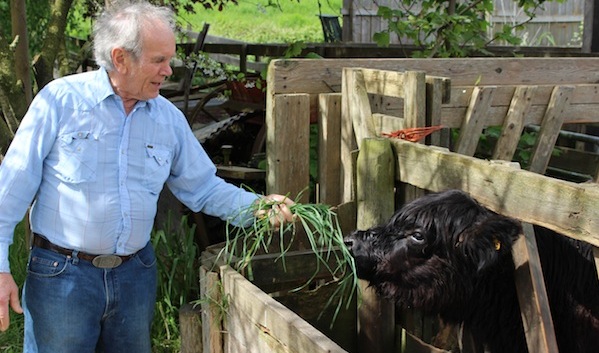
Harold Steves a proponent of farming and food security, still farms the property his family has owned for generations. In fact the town of Steveston bears the name of this prominent Richmond family. Pictured below left, Harold reveals his overwinter Cauliflower, ready to be picked in early April, and pictured right he holds a reprint of his granfather's heirloom seed catalogue published in 1888. For more information on ALR or products available from the Steves family farm visit: http://www.stevesfarm.com/
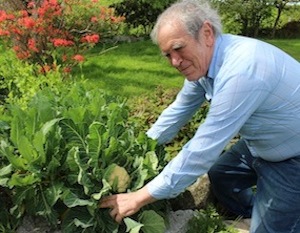
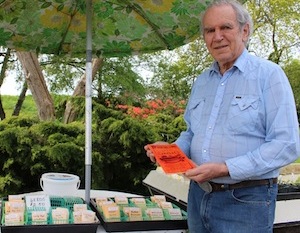
Whether it be Serile Insect Release, using bacterial fungal or viral entomopathogens, internet enabled plant scanning technology, or farmland protection legislation British Columbia is leading the advancement of innovative farming solutions for today and looking to the future. For to feed so many people on diminished arable land area, and with diminished resource inputs, will require humans to continue to innovate, to be incredibly mindful of each and every decision we make, and most certainly modify our behaviour significantly.
Fast Forward:
As we head into the 21st century and beyond it is widely accepted that we are getting far beyond the limits of the Earth’s capacity to feed, clothe, and sustain the basic survival needs of far too many people. It is estimated by the World Food Program that currently more than 10% of the worlds population “do not have enough food to lead a healthy active life”. The United Nations estimates that the current world population of 7.2 billion is projected to reach 9.6 billion by 2050. This 25% increase from current levels will be also be accompanied by a marked increase in crops affected by global climate change, increased competition for arable land, water, and other resources, likely resulting the average cost of food production being much higher than it is today. As the world hurtles toward intensely globalized markets, and agriculture competes with residential and commercial urbanization for a dwindling supply of arable land, the likelihood of future food supply disruptions makes global community based Food Security, crucial to the survival of humans on planet Earth.
In addition to food supply, food quality is another concern for the future. The potentially deadly by-product of indiscriminate use of chemicals has been known for many years. The growing popularity of the Organic Food movement speaks to the globally pervasive recognition that chemical methods of controlling insects are not sufficient to combat insect pests, and in fact much like antibiotics are requiring higher and higher doses of chemicals as insects become immune to their effects. As well, the deadly toxic tradeoff for humans and our animal co-pilot friends here on planet Earth grows each year as global annual production of hazardous chemicals grows and over 21 Billion pounds of toxic chemicals are released into our land, air, and water annually (of which almost 25% are known carcinogens). Globally, there has been a move by many in the agricultural industry to develop alternative means to the use of chemicals, and to produce organic products that follow the basic tenant that we should all aspire to; that being “to do no harm.”
@JasonLRobinson
https://sustainabilitytelevision.com/users/robinson
Some facts & figures:
- to see the incredibly small amount of arable land zoned as agricultural in the mostly mountainous Province of BC please view this map: http://www.alc.gov.bc.ca/alc/content/alr-maps/maps-and-gis
- to see forest changes over time view these maps courtesy of the Ancient Forest Alliance: http://www.ancientforestalliance.org/old-growth-maps.php
- to see that this is a worldwide phenomenon see:
- land cleared between 2012 and 2014 in Queensland, Australia: http://bit.ly/2apXSNe
- the massive amount of chemicals produced and emitted each day: http://www.unep.org/hazardoussubstances/Portals/9/Mainstreaming/GCO/The%...
- to see more info on the maximum carrying capacity of the planet: http://worldpopulationhistory.org/carrying-capacity/ and http://na.unep.net/geas/archive/pdfs/geas_jun_12_carrying_capacity.pdf
Category:






















